79 Cell Phone/Smartphone Addiction Statistics
The average person checks their phone every 12 minutes, or approximately 80 times per day.

Top 10 Cell Phone Addiction Statistics
- 47% of Americans are addicted to their phones.
- The average person checks their phone every 12 minutes, or approximately 80 times per day.
- 44% of adults in the U.S. say that not having their phones gives them anxiety.
- Cell phones cause more than 1 out of 5 car accidents.
- Almost two-thirds of children spend four hours or more per day on their smartphones.
- 77% of Americans own a smartphone.
- Teenagers spend an average of 9 hours a day on their smartphones.
- 66% of teenagers feel anxious when they don't have their smartphones.
- 34% of teenagers say they have "excessive" smartphone use.
- 47% of teenagers say they are "constantly" checking their phones.

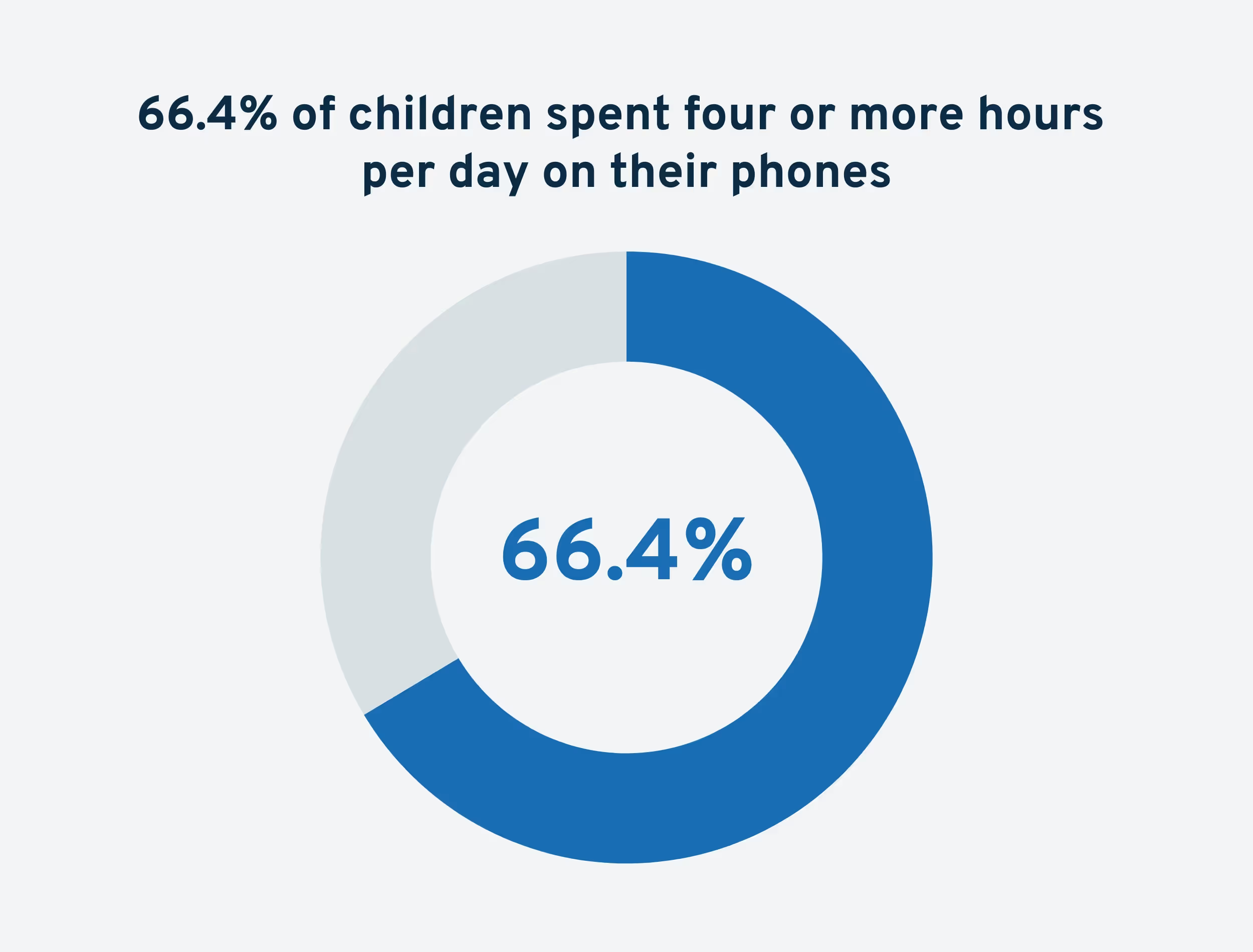
Important Smartphone Addiction Statistics
Did you know that almost 50% of Americans are addicted to their phones? Unfortunately, cell phone addiction rates continue to rise as more and more people get a smartphone. Social media is a big driver of the increase in cell phone addiction, as well as other apps like Youtube. Find more phone addiction stats below.

1. Over three-quarters of Americans (77%) now own a smartphone.
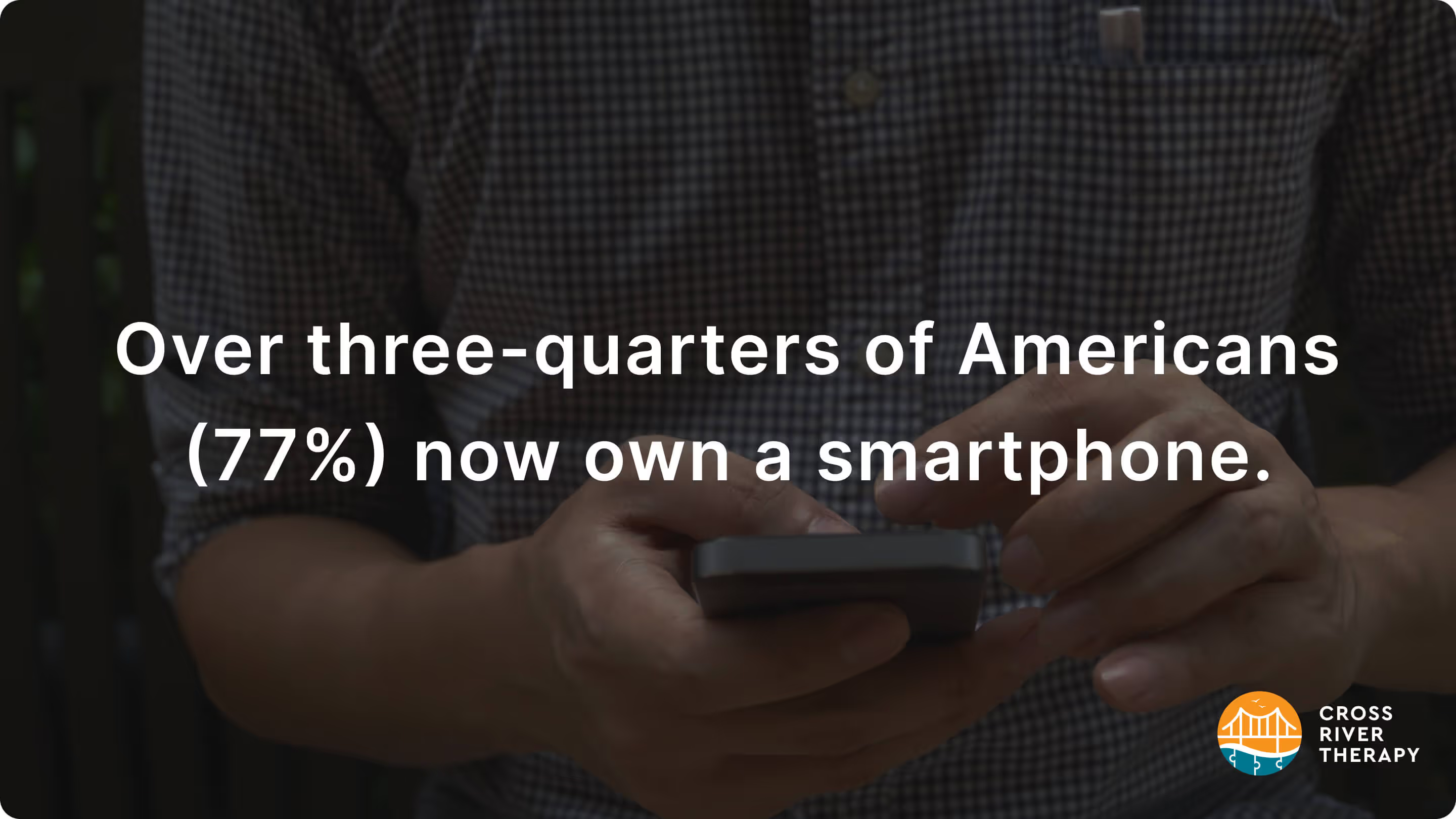
2. More than half of Americans (53%) say they “couldn’t live without” their smartphones.
3. The average American checks their smartphone every 12 minutes.
4. About half of Americans (48%) say they feel “addicted” to their smartphones.
5. The average American spends over four hours a day on their smartphone.
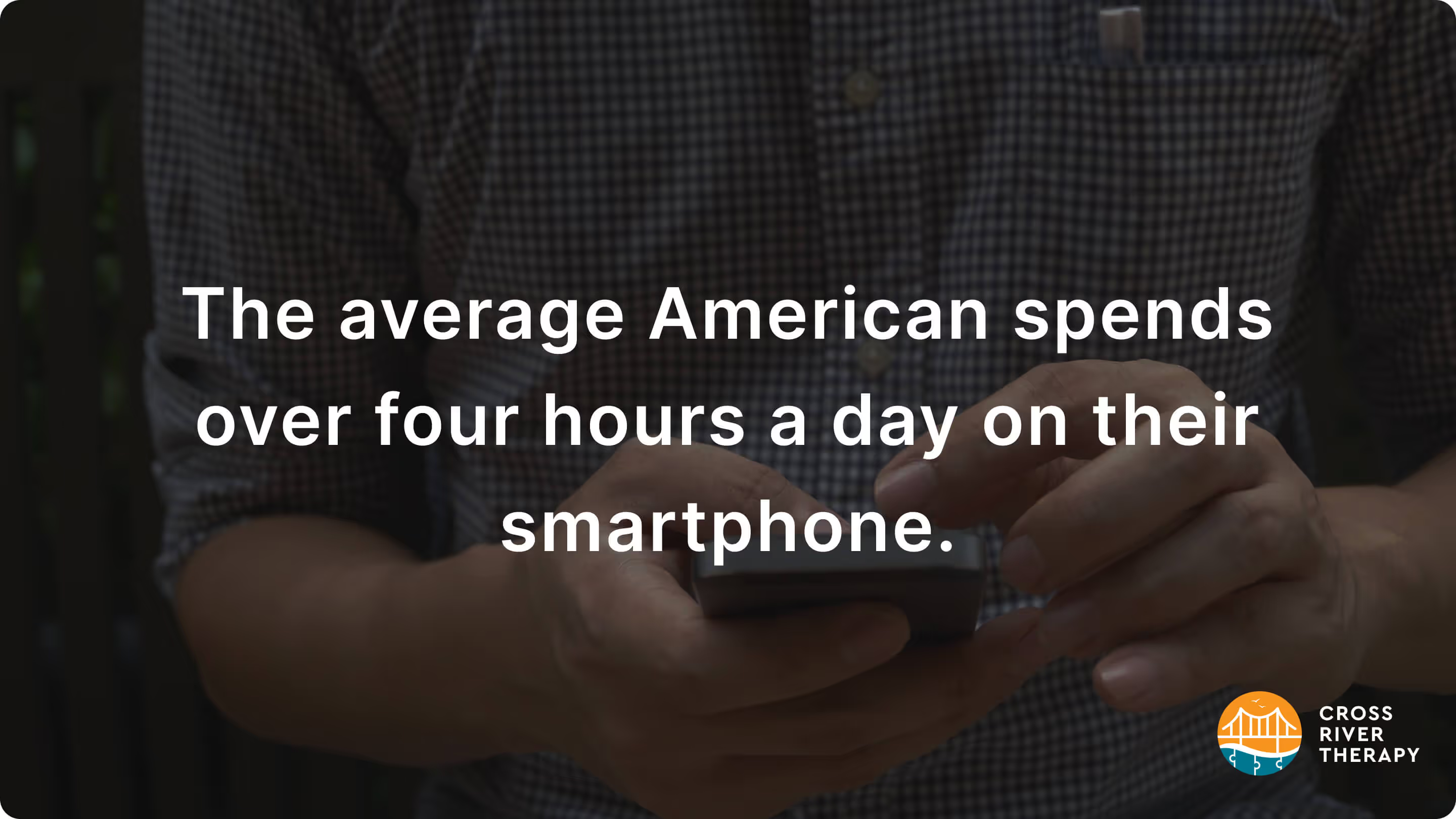
6. Teenagers spend an average of nine hours a day on their smartphones.
7. Nearly one in three teenagers (32%) say they are “addicted” to their smartphones.
8. Two-thirds of teenagers (66%) say they feel “anxious” when they don’t have their smartphones.
9. One-third of teenagers (34%) say they have “excessive” smartphone use.

10. About half of teenagers (47%) say they are “constantly” checking their smartphones.
11. Nearly one in four teenagers (23%) say they feel “uncomfortable” when they don’t have their smartphones.
12. Nearly two-thirds of teenagers (64%) say they feel “sad” when they don’t have their smartphones.
13. One in five teenagers (20%) say they feel “angry” when they don’t have their smartphones.
14. More than one-third of teenagers (37%) say they feel “lonely” when they don’t have their smartphones.
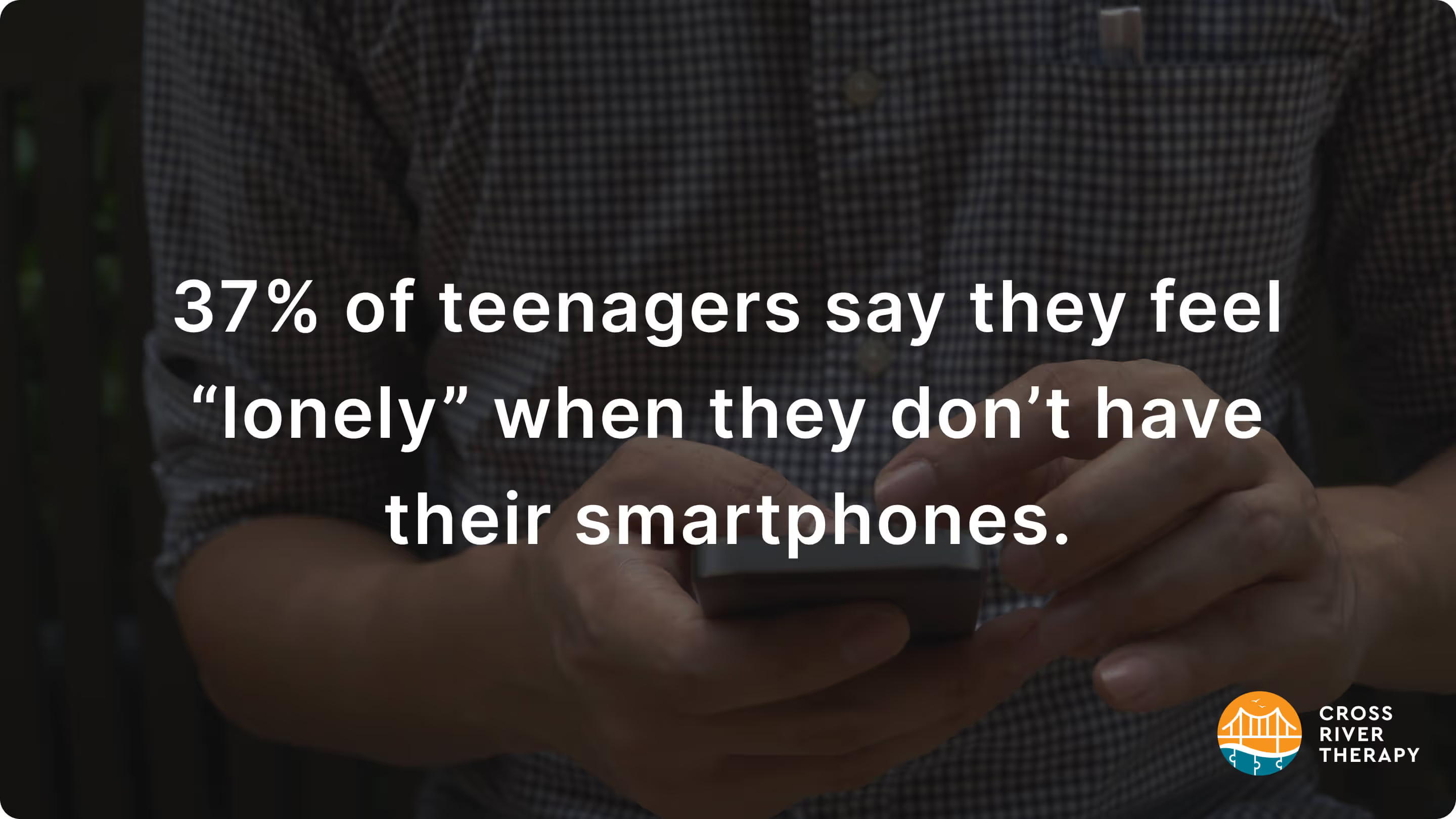
15. Over one-third of teenagers (36%) say they feel “anxious” when they are away from their smartphones.
16. Nearly one in five teenagers (19%) say they feel “nervous” when they are away from their smartphones.
17. Over one-third of teenagers (37%) say they feel “lost” when they don’t have their smartphones.
18. Nearly one-quarter of teenagers (24%) say they feel “powerless” when they don’t have their smartphones.
19. More than one-third of teenagers (37%) say they feel “disconnected” when they don’t have their smartphones.

20. Nearly one in four teenagers (23%) say they feel “depressed” when they don’t have their smartphones.
21. Nearly one-quarter of teenagers (24%) say they feel “irritable” when they don’t have their smartphones.
22. More than one-third of teenagers (36%) say they feel “helpless” when they don’t have their smartphones.
23. Nearly one in three teenagers (29%) say they feel “tired” when they don’t have their smartphones.
24. Nearly one-quarter of teenagers (23%) say they feel “panicky” when they don’t have their smartphones.
25. Over one-third of teenagers (37%) say they feel “insecure” when they don’t have their smartphones.
26. Nearly one in four teenagers (24%) say they feel “suffocated” when they don’t have their smartphones.
27. About one-third of teenagers (32%) say they feel “overwhelmed” when they don’t have their smartphones.
28. More than half of teenagers (52%) say they are “unable to concentrate” when they don’t have their smartphones.
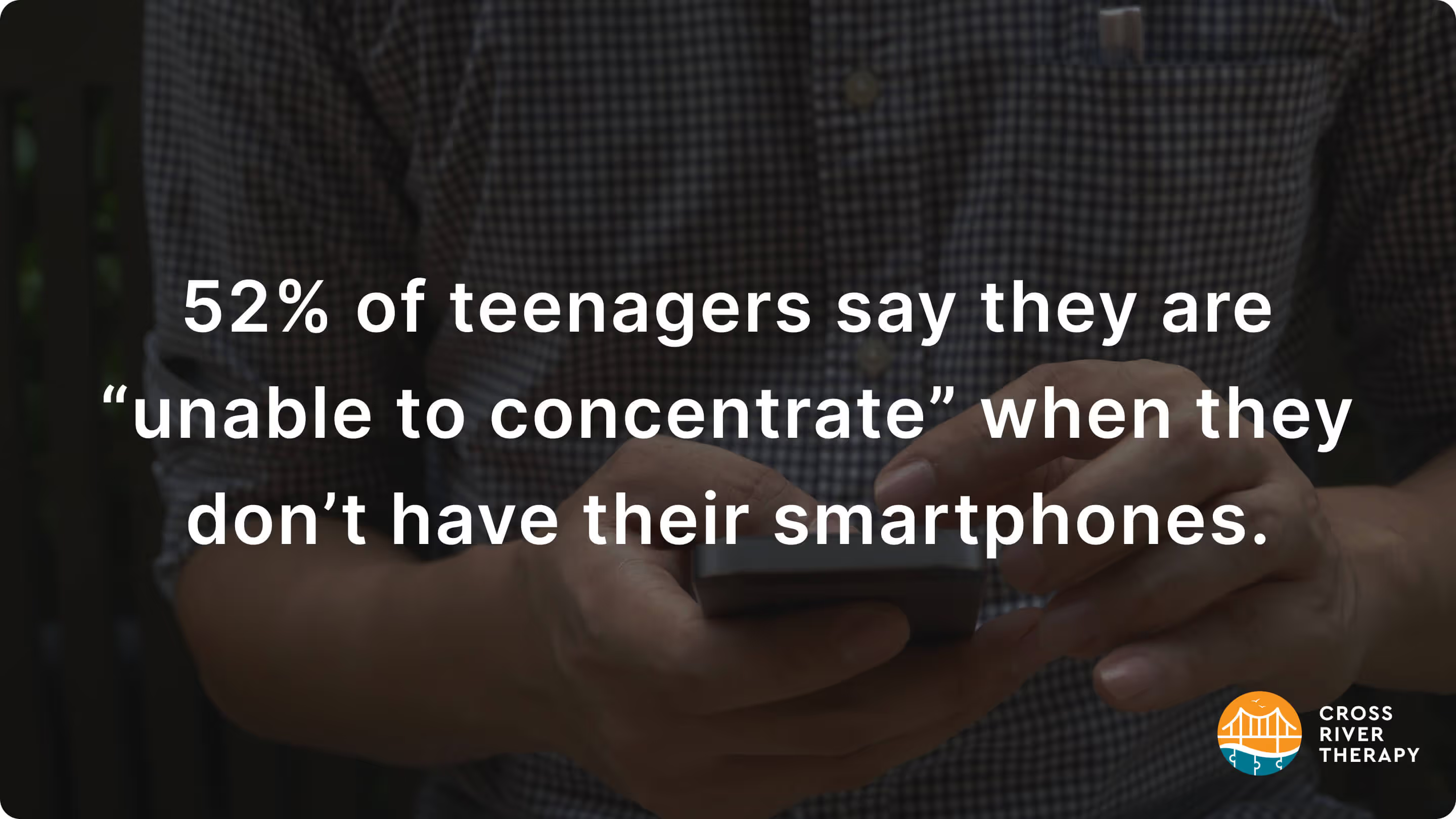
29. Nearly one-third of teenagers (30%) say they feel “isolated” when they don’t have their smartphones.
30. About one-third of teenagers (31%) say they feel “frustrated” when they don’t have their smartphones.
31. Over one-quarter of teenagers (27%) say they feel “impatient” when they don’t have their smartphones.
32. Nearly one in five teenagers (18%) say they feel “lonely” when their smartphones are taken away.
33. Nearly one in five teenagers (17%) say they feel “fearful” when their smartphones are taken away.
34. More than one-third of teenagers (37%) say they feel “dependent” on their smartphones.
35. About one-third of teenagers (30%) say they feel “addicted” to their smartphones.
36. Three-quarters of teenagers (74%) say they feel “anxious” when their smartphones are taken away.
37. Over one-third of teenagers (37%) say they feel “discouraged” when their smartphones are taken away.
38. Nearly one-third of teenagers (30%) say they feel “powerless” when their smartphones are taken away.
39. Over one-third of teenagers (37%) say they feel “insecure” when their smartphones are taken away.

40. About one-third of teenagers (30%) say they feel “stressed” when their smartphones are taken away.
41. Over one-third of teenagers (35%) say they feel “unmotivated” when their smartphones are taken away.
42. Nearly one-third of teenagers (30%) say they feel “sad” when their smartphones are taken away.
43. Nearly one-third of teenagers (30%) say they feel “helpless” when their smartphones are taken away.
44. Nearly one-quarter of teenagers (23%) say they feel “afraid” when their smartphones are taken away.
45. Over one-third of teenagers (36%) say they feel “isolated” when their smartphones are taken away.
46. Over one-third of teenagers (37%) say they feel “incomplete” when their smartphones are taken away.
47. Nearly one-third of teenagers (30%) say they feel “lonely” when their smartphones are taken away.
48. Nearly one in five teenagers (18%) say they feel “depressed” when their smartphones are taken away.

49. Over one-third of teenagers (37%) say they feel “anxious” when their smartphone batteries are low.
50. More than one-third of teenagers (36%) say they feel “powerless” when their smartphone batteries are low.
51. Nearly one-third of teenagers (30%) say they feel “stressed” when their smartphone batteries are low.
52. Nearly one-third of teenagers (29%) say they feel “irritable” when their smartphone batteries are low.
53. Over one-third of teenagers (37%) say they feel “discouraged” when their smartphone batteries are low.
54. Nearly one in four teenagers (24%) say they feel “overwhelmed” when their smartphone batteries are low.

55. More than one-third of teenagers (37%) say they feel “anxious” when their smartphones are not working.
56. Nearly one-third of teenagers (30%) say they feel “stressed” when their smartphones are not working.
57. Nearly one-third of teenagers (29%) say they feel “angry” when their smartphones are not working.
58. Over one-third of teenagers (37%) say they feel “powerless” when their smartphones are not working.
59. Nearly one-third of teenagers (30%) say they feel “insecure” when their smartphones are not working.
60. Nearly one-quarter of teenagers (23%) say they feel “depressed” when their smartphones are not working.
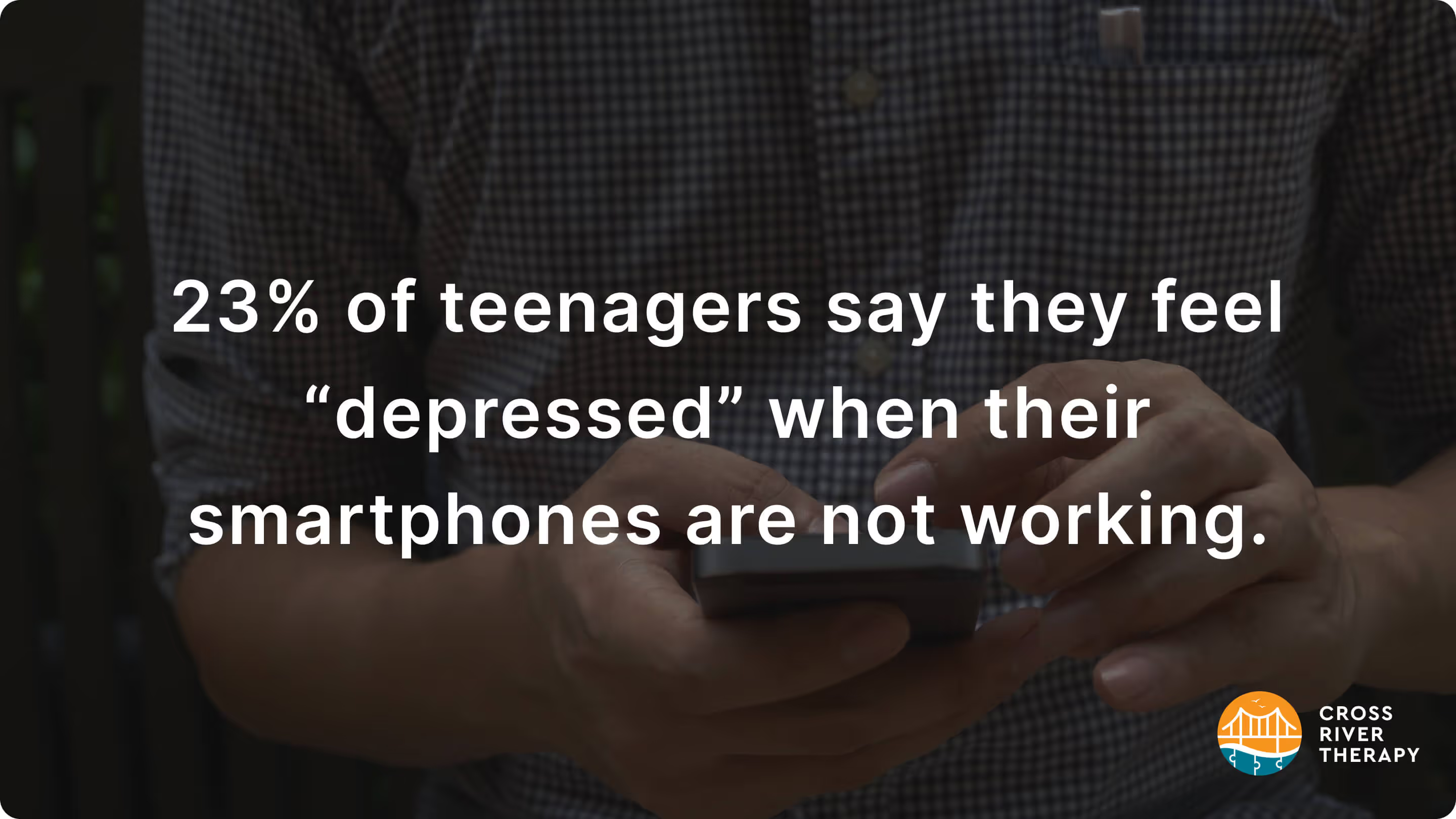
61. 66% of the population shows signs of nomophobia, which is the fear of being without your phone.
62. The average smartphone user will click, tap or swipe their phone 2,617 times per day.
63. 50% of survey respondents reported feeling uneasy when they left their phones at home.
Teen Smartphone Addiction Statistics
- Over three-quarters of Americans (77%) now own a smartphone.
- Teenagers spend an average of nine hours a day on their smartphones.
- Nearly one in three teenagers (32%) say they are “addicted” to their smartphones.
- Two-thirds of teenagers (66%) say they feel “anxious” when they don’t have their smartphones.
- One-third of teenagers (34%) say they have “excessive” smartphone use.
- About half of teenagers (47%) say they are “constantly” checking their smartphones.
Smartphone Usage By Country
Smartphones are becoming increasingly popular across the globe, with most countries now having access to the latest technology. In the USA, over three-quarters of adults (77%) own a smartphone and the majority of teenagers (74%) have their own device.
Smartphone usage isn’t just limited to the USA, however. In China, over 90% of adults own a smartphone and in Japan, over 80% of adults own a device. Across Europe, smartphone usage is also high, with Spain having the highest rate of ownership at 84%.
In Africa, smartphone usage is on the rise, with Ghana having the highest rate of ownership at 53%.
In India, smartphone usage has also seen exponential growth in recent years, with the ownership rate rising from 24% in 2017 to 43% in 2020.
In South America, Brazil has the highest rate of ownership at 75%, followed by Colombia at 74%. Australia has a high rate of ownership, with over three-quarters of adults (77%) owning a smartphone.
Smartphone usage varies significantly from country to country. In some countries, such as the USA and China, usage is very high, while in other countries, such as India and Ghana, usage is still growing.
Smartphone usage is also affected by a variety of factors such as income level, population density, and access to the internet. As technology continues to advance, it is likely that smartphone usage will continue to increase across the globe.
COVID-19 Impact On Cell Phone Addiction
The COVID-19 pandemic has had a significant impact on smartphone addiction and usage. With people stuck at home and unable to go out, many have turned to their smartphones for entertainment and connection to the outside world.
This has led to an increase in smartphone addiction, with people spending more and more time on their devices.
In addition, many people have started using their smartphones as a way to stay in touch with friends and family, or to keep up with the news. As a result, people are now even more dependent on their smartphones than before, and this is likely to continue even after the pandemic has ended.
Cell Phone Addiction By Age
Cell phone addiction is becoming increasingly common, particularly among teenagers. According to a recent survey, nearly one in three teenagers (32%) say they are “addicted” to their smartphones.
Teenagers are spending an average of nine hours a day on their phones, and many feel “anxious” when they don’t have their devices or when their battery is low. This addiction is having a significant impact on their lives, with many feeling “lonely”, “insecure”, and “helpless” when away from their phones.
Adults are also becoming increasingly dependent on their smartphones, with the average adult spending over four hours a day on their device. Many adults also feel “addicted” to their phones, with 48% saying they “couldn’t live without” their devices. This addiction can be detrimental to their mental health, as many adults feel “anxious”, “stressed”, and “insecure” when away from their phones.
Cell phone addiction is a growing problem across all ages, and it is important to be aware of the risks. Smartphones offer numerous benefits, but it is important to be aware of the potential pitfalls and to take steps to ensure that you are using your device in a healthy manner.
Smartphone Addiction FAQs
How Many Times Per Day Do People Check Their Smartphones?
The average person checks their phone every 12 minutes, or approximately 80 times per day. This number varies depending on the individual, however, with some people checking their phones even more frequently.
Teenagers, in particular, are known to check their phones even more frequently, with some checking their phones as often as every 5 minutes. Smartphone usage has become an integral part of daily life for many people, and it is likely that this number will continue to increase in the future.
Where Do People Use Their Smartphones The Most?
People use their smartphones most while they are at home. This is because it is convenient to have access to the internet and all of their apps without having to leave the house. At work, people mostly use their phones for communication purposes, such as texting, emailing, and making calls.
People also use their phones while they are in public places, such as on the bus or in a restaurant. Smartphones have become an integral part of daily life for many people, and it is likely that this trend will continue in the future.
How Much Time Do We Spend On Our Phones?
The average person spends about four hours a day on their smartphone, with teenagers spending even more time (an average of nine hours a day).
This number is likely to increase in the future, as people become even more dependent on their devices. Smartphones have become an integral part of our lives, and it is important to be aware of how much time we are spending on them.
What Percentage Of People Are Addicted To Smartphones?
According to a recent survey, 48% of Americans say they feel “addicted” to their smartphones. This number is even higher among teenagers, with nearly one in three (32%) saying they are “addicted” to their devices.
These numbers are likely to increase in the future, as more and more people become dependent on their devices. It is important to be aware of the risks of smartphone addiction and to take steps to ensure that you are using your device in a healthy manner.
How Many People Are Addicted To Phones In The World?
It is difficult to estimate how many people are addicted to smartphones worldwide, as the data is limited and varies from country to country.
However, it is likely that the number of people addicted to their phones is increasing, as more and more people are becoming dependent on their devices.
Smartphone addiction is a growing problem that affects people of all ages, and it is important to be aware of the risks and to take steps to ensure that you are using your device in a healthy manner.
Conclusion
Smartphone addiction is a growing problem that affects people of all ages. Over three-quarters of Americans (77%) now own a smartphone, and many feel “addicted” to their devices.
Teenagers are particularly prone to smartphone addiction, with nearly one in three (32%) saying they are “addicted” to their phones.
Smartphone addiction can have a significant impact on mental health, and it is important to be aware of the risks and to take steps to ensure that you are using your device in a healthy manner.
Sources
Recent News
Related articles
.avif)
100+ YouTube Statistics, Facts & Demographics
In 2023, YouTube has over 2.5 billion monthly active users.

39 Teacher Statistics And Demographics
Find the most up-to-date teacher demographics and statistics that'll surprise you.

Twitter Statistics for Social Media Enthusiasts [2024]
Explore compelling twitter statistics, user demographics, content engagement, and future predictions.
.avif)
89 TikTok Statistics, Facts & User Demographics
New TikTok statistics show that TikTok has quickly become one of the most popular social media platforms, with users spending an average of 52 minutes per day scrolling through videos.

Key Tinder Statistics You Need to Know
Dive into the world of Tinder statistics - revealing insights on user demographics, engagement, and global trends.
.avif)
49 Telehealth Statistics & Telemedicine Trends
Telehealth statistics show that the use of virtual care is 38 times higher than before the COVID-19 pandemic.

Teacher Salary By State: Highest-Paid Teachers By State
Today we'll breakdown a teacher's salary by state, as well as the highest-paid teachers by state.
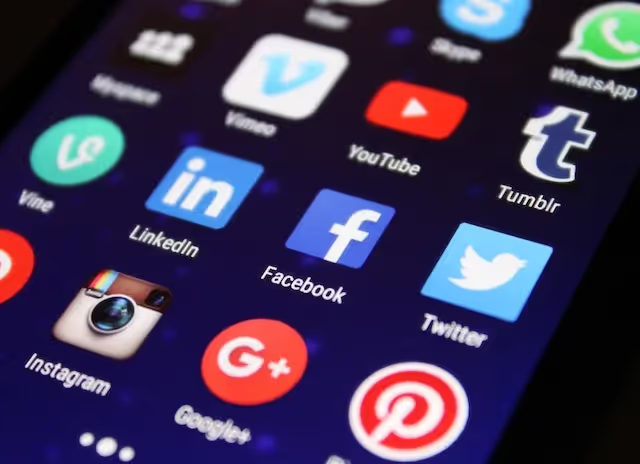
121 Social Media Addiction Statistics Worldwide
Did you know that around 70% of teens and young adults in the US have a social media addiction?

57 Scholarship Statistics, Facts & Demographics
Did you know over 1.7 million scholarships are awarded annually? Keep reading to find more scholarship statistics.
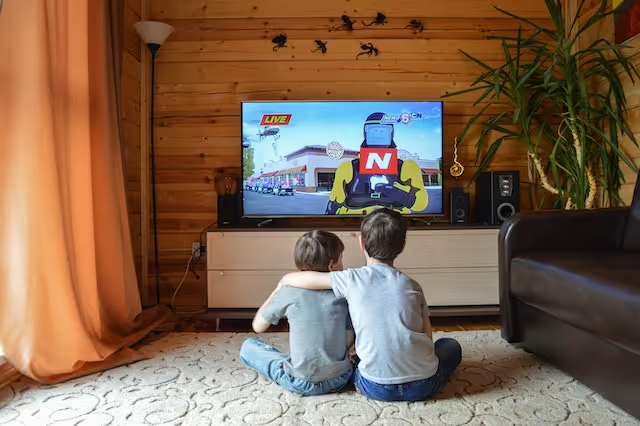
Average Screen Time Statistics & Facts (Usage)
Did you know people spend 6 hours 58 minutes on screens everyday? Find more screen time statistics below.

59 Physical Therapy Statistics, Facts & Demographics
There are 578,565 people employed in the physical therapy industry in the US as of 2022. Find more physical therapy statistics and facts below.

Spotify Statistics: 79+ Intriguing Consumption Statistics in Music
Dive into the evolution of music with intriguing Spotify statistics; from user engagement to financial performance.

